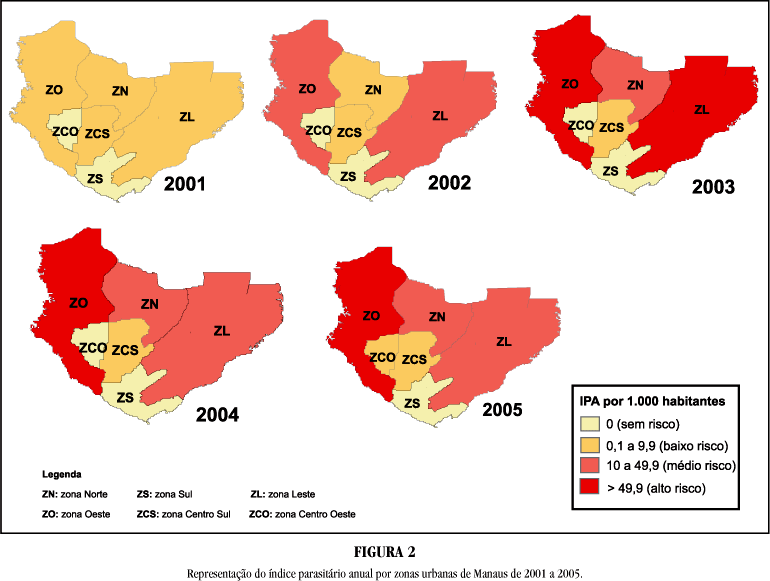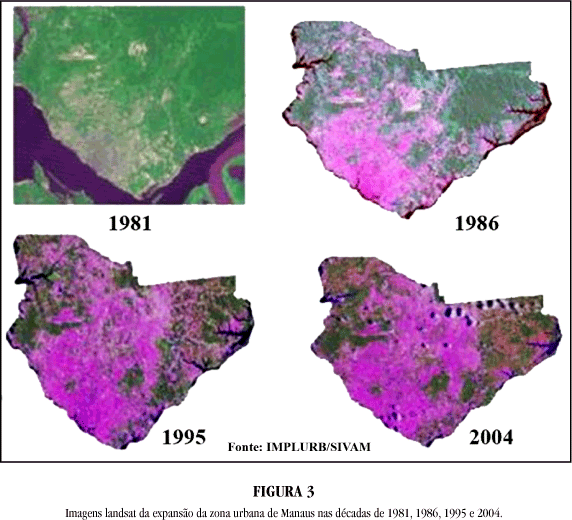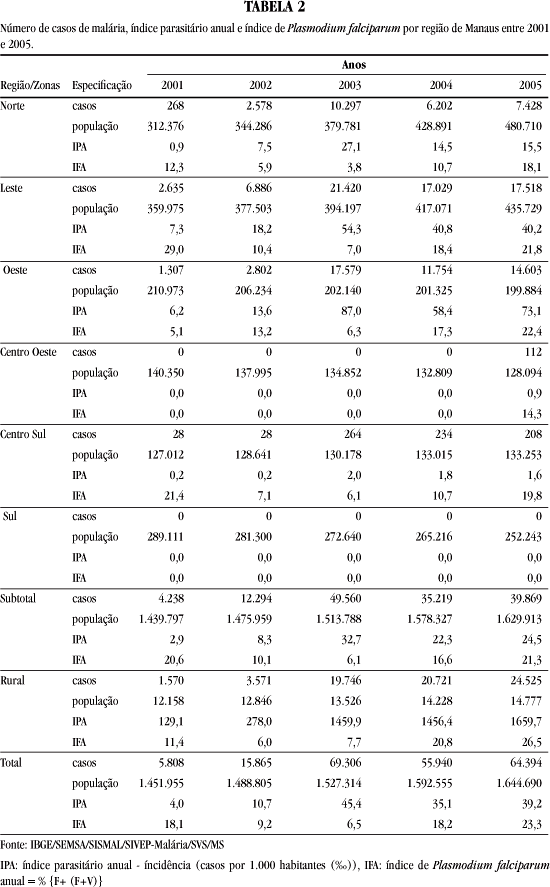In the municipality of Manaus, intensification of the migratory process, along with precarious epidemiological and entomological surveillance, resulted in reintroduction of malaria transmission on the urban perimeter (in the eastern zone), in July 1988, after 13 years without any records of autochthonous disease. This study reports on the epidemiological situation relating to malaria and to the areas that were subjected to human actions (deforestation, human settlement, fish-rearing activity, etc) in Manaus, between 1986 and 2005. In this municipality, the population increase from 1986 to 2005 was 105.2%. This resulted from occupation of space, in the form of invasions and housing projects. From 2003, the increase in relation to 1986 was more than 2,000%. In these areas, there were increases in disease incidence. The annual parasitic index in the municipality ranged from low to medium risk and, between urban zones, it ranged from no risk to high risk. In the eastern, western and northern zones, which still contain areas with agricultural characteristics, there was greater receptivity and vulnerability to transmission.
Malaria; Human actions; Occupation of spaces












